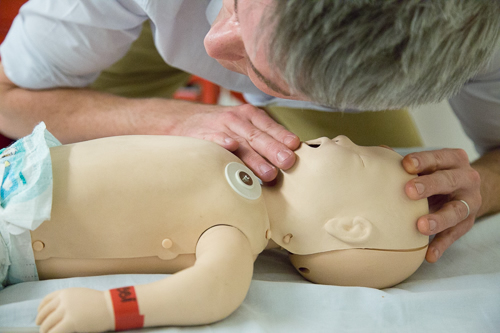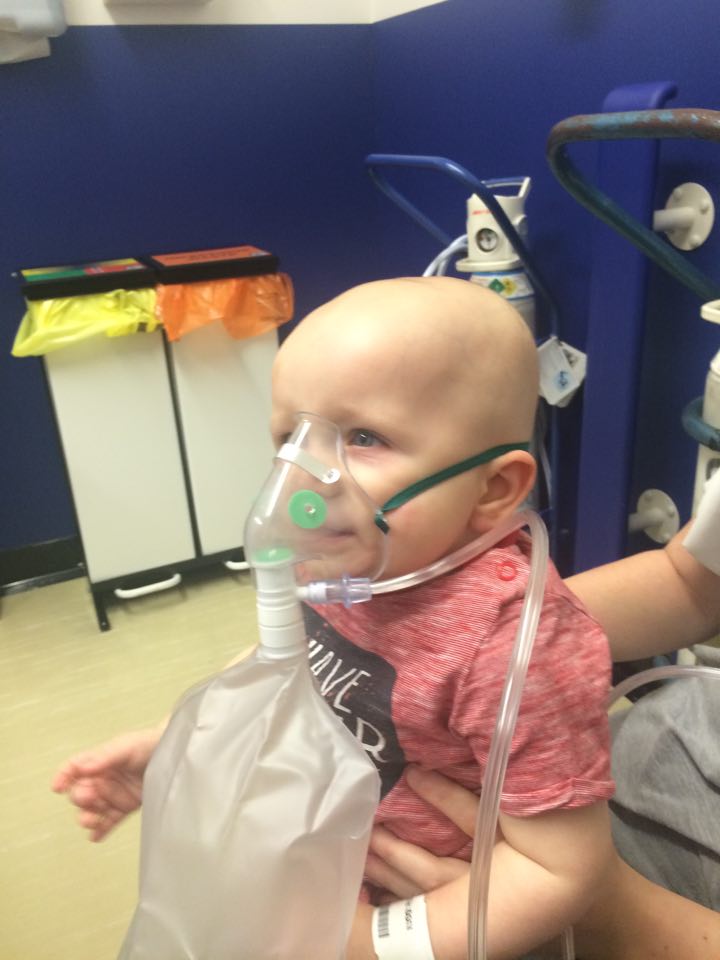A
RECOGNITION AND RESPONSE
Recognition
- Assess patency by
- Looking for chest and/or abdominal movement –
- Listening for breath sounds and
- Feeling for expired air.
- Vocalisations, such as crying or talking, indicate ventilation and some degree of airway patency.
- Paradoxical chest and abdominal movements
- Signs of airway obstruction?
- Foreign body visible?
- Fully obstructed airway will be silent
- Cyanosis/hypoxia is a late sign
Response
- Call for help if signs of airway obstruction
- Basic airway manoeuvres
- Older child: Head tilt, chin lift
- Infant: neutral position
- Jaw thrust
- Airway adjuncts
- Oropharyngeal airway
- Nasopharyngeal airway
- Suction secretions (Yankauer)
- Give oxygen (O2) if required to maintain saturations of 94-98%
- Call an anaesthetist for definitive airway management
Recognition: Look, listen, feel
Immediate assessment to ensure patency of the airway can be done using the look, listen, feel approach.
LOOK
- Chest movements - present or absent, normal or abnormal
- Paradoxical ‘see-saw’ pattern - presence indicates obstruction
- Use of accessory muscles
- Tracheal tug
- Foreign body obstruction
- Misting of the oxygen mask
LISTEN
- Abnormal sounds - snoring, choking, gurgling, hoarseness, stridor
- Complete airway obstruction will be silent
FEEL
- Airflow on inspiration and expiration through the mouth and nose

Figure: Look, listen, feel
Response
- If you are concerned regarding an airway CALL FOR HELP
- Basic airway manoeuvres: Head tilt / chin lift, jaw thrust
- Remove obvious foreign bodies or suction secretions (only under direct vision)
- Use airway adjuncts
- Oxygen – 15 L/min via a reservoir mask

Figure: Non-rebreathe face mask (connected to a supply of oxygen at 15 L/min)

Figure: Suction (This is a demonstration of the use of a Yankauer suction catheter to clear secretions from the mouth. This should be done with observation (direct vision) of where you are suctioning in order to not stimulate the oropharynx in a patient with an intact gag reflex as this can provoke vomiting or laryngospasm.
Investigations to consider in Airway assessment
Primary Investigations
- Continuous oxygen saturation (SaO2) monitoring
- Peak flow rate
Secondary investigations (selected cases)
- Blood gas (capillary, venous or arterial)
- Chest X-ray
- Sputum for culture
- Throat swab





